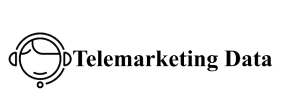In the realm of digital communication, emails remain a powerful tool for engaging audiences, sharing information, and promoting products or services. An essential aspect of crafting effective email content is the strategic use of images. Images have the potential to capture attention, convey messages, and enhance the overall visual appeal of emails. However, to harness their full potential, it’s important to follow some best practices for incorporating images into your email campaigns. 1. Purposeful Relevance: Every image in your email should serve a clear purpose and relate directly to the email’s content. Irrelevant or generic images can confuse recipients and dilute your message’s impact. Whether it’s a product photo, a visual representation of data, or an illustrative element, ensure that each image complements the email’s central theme.
Optimize for Loading Speed Slow-loading emails can frustrate recipients
Lead to high bounce rates. To counter this, optimize your images for web use by compressing them without sacrificing quality. Use modern image formats like JPEG or PNG, and keep file sizes as small as possible while maintaining clarity. 3. Mobile-Friendly Design: With a significant portion of email Clipping Path opens occurring on mobile devices, it’s crucial to design your emails with mobile responsiveness in mind. Use images that adapt to various screen sizes without losing visual appeal or distorting proportions. Additionally, choose images that convey your message effectively even when viewed on smaller screens. 4. Alt Text for Accessibility: Accessibility is a key consideration when sending emails. Include descriptive alt text for each image, allowing visually impaired recipients to understand the content. Alt text also serves as a fallback in case images don’t load properly, ensuring your message is still communicated effectively.
Balance Text and Images While images can enhance the visual
Appeal of your emails, an excessive reliance on images can lead to problems. Some email clients might block images by default or categorize image-heavy emails as spam. Strike a balance between text and images, using text to convey essential information and images to supplement EL Leads and reinforce the message. 6. Clear Call-to-Action (CTA): If your email includes buttons or banners with CTAs, use images strategically to draw attention to them. Employ contrasting colors and eye-catching visuals to guide recipients’ focus toward the desired action. The image should complement the CTA text and encourage recipients to take the intended next steps. 7. Test Cross-Client Compatibility: Different email clients and devices can render images differently. Before sending out your campaign, test how your images appear across various email platforms to ensure a consistent and visually appealing experience for all recipients. This helps maintain the integrity of your design and messaging.







